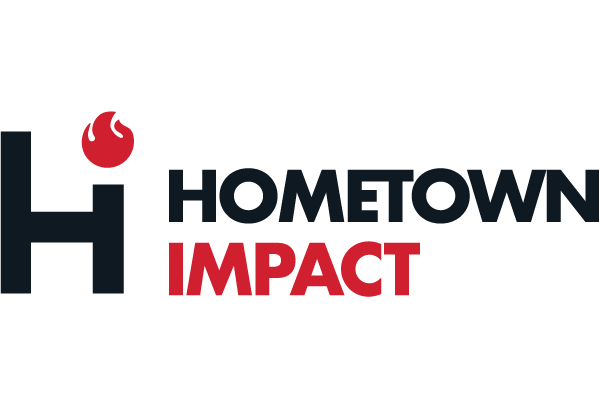Top SEO Mistakes to Avoid: Boost Your Rankings the Right Way
In the digital realm, visibility is the lifeblood of every business. But how do you ensure your website stands out in an ocean of billions? Search Engine Optimization (SEO) is the answer. Yet, navigating the intricate world of SEO can feel like a minefield, with countless pitfalls and SEO mistakes that could send your website plummeting in the search engine rankings.
Key Takeaways
Poor keyword selection can lead to poor SEO results.
Long-tail keywords offer low competition and high conversion opportunities for success.
Keyword cannibalization, duplicate content, meta tags, title tags, and internal links must be managed correctly to optimize SEO performance.
The Pitfalls of Poor Keyword Selection
Keyword selection for SEO
One of the most common SEO mistakes is poor keyword selection. Just as the right words can propel a website to the first page of search engine results pages, the wrong ones can leave it languishing in obscurity. To avoid this and other SEO mistakes, it’s crucial to focus on search engine optimization and select the most relevant keywords for your content.
Keyword research isn’t just about identifying relevant keywords; it’s about understanding your target audience and figuring out the language they use to search for products or services like yours.
The Impact of Ignoring Long-Tail Keywords
Ignoring long-tail keywords is like leaving money on the table. These keywords, which are longer and more specific than their short-tail counterparts, often have lower competition and higher conversion rates. They’re the low-hanging fruit of SEO, ideal for small businesses trying to make a foothold in a competitive market.
The Risks of Keyword Cannibalization
Another pitfall is keyword cannibalization, where multiple pages on a website compete for the same keyword. This confuses search engines and dilutes the ranking potential of each page, leading to reduced visibility and organic traffic. It’s like running in a race where your teammates are also your competitors.
Navigating the Maze of Meta Tag Missteps
Meta tag optimization
Just as a book is judged by its cover, a webpage is often judged by its meta tags. These concise snippets provide a preview of your content in search engine results, enticing users to click through to your site.
However erroneous or ineffective meta tags can drastically reduce clicks and hamper SEO performance.
Crafting Compelling Meta Descriptions
Think of meta descriptions as your elevator pitch to potential visitors. They should be persuasive, include relevant keywords, and encourage clicks from search results.
A captivating meta description is like a movie trailer: it gives a sneak peek of what’s inside, leaving the audience wanting more.
Optimizing Title Tags for Maximum Impact
Title tags, on the other hand, are like book titles. They should be unique, and descriptive, and target important keywords, giving both users and search engines a clear idea of what each page is about.
An effective title tag isn’t just good for SEO; it also improves user experience, encouraging visitors to stay and explore your site.
Avoiding Duplicate Content Dilemmas
Canonical tags and duplicate content
If you enter a bookstore where every book has the same content, you’ll likely leave without making a purchase. This is similar to how search engines react to duplicate content. They get confused, which could lead to lower rankings and less visibility.
Implementing Canonical Tags Correctly
Canonical tags are like street signs, guiding search engines to the preferred version of a page and preventing duplicate content penalties. They ensure that search engines understand the structure of your site and prioritize the right pages, improving overall SEO performance.
Redirect Strategies to Eliminate Duplicate Issues
301 redirects, on the other hand, are like detour signs, leading visitors from old or duplicate pages to the correct ones. They preserve link equity and improve site performance, contributing to higher search rankings and a better user experience.
Internal Linking Lapses and Their Consequences
Internal linking for SEO
Imagine a city without street signs or landmarks. It would be nearly impossible to find your way around, right? That’s how users feel when navigating a website with poor internal linking. Proper internal linking helps users and search engines navigate your site and understand its content, improving overall SEO performance.
The Art of Contextual Internal Links
Contextual internal links are like tour guides, leading users to relevant and interesting content within your site. They enhance user experience and distribute link equity across your pages, boosting your site’s authority and search performance. Additionally, internal and external links play a crucial role in optimizing your website’s SEO.
Balancing Link Quantity with Quality
In SEO, as in much of life, quality trumps quantity. A few high-quality, relevant internal links can do more for your SEO performance than a plethora of low-quality ones. It’s about creating a web of interconnected content that adds value for users and improves your site’s visibility in search engines.
Overlooking Mobile Optimization
Mobile optimization for SEO
In today’s world, where mobile devices are increasingly becoming the primary gateway to the internet, a website that isn’t optimized for mobile is like a car without wheels. It’s going nowhere fast.
Mobile optimization, a crucial aspect of digital marketing, is essential for SEO, affecting everything from user experience to search engine rankings.
Enhancing Page Load Speed for Mobile Devices
Page load speed can be compared to the service speed at a restaurant. The quicker it is, the higher the customer satisfaction.
Fast-loading mobile pages keeps users engaged, improving user experience and contributing to better search rankings.
Responsive Design: A Necessity, Not an Option
Responsive design can be compared to a well-fitted suit. It adapts perfectly, no matter the size or shape of the user’s device. A well-designed website should look and function well on all devices, ensuring a seamless user experience and better SEO performance.
The Faux Pas of Ineffective External Linking
Much like a well-crafted resume, a good link profile can boost your credibility and increase your chances of success. However ineffective external linking practices can hurt your SEO performance, leading to lower rankings and reduced visibility.
Evaluating the Quality of External Links
Not all links hold the same value in the domain of SEO. High-quality, relevant external links can boost your site’s authority and search performance, while low-quality or irrelevant links, such as broken links, can do more harm than good.
The Balance of DoFollow and NoFollow Links
Dofollow and nofollow links can be likened to the concept of yin and yang in SEO. You need a balance of both to maintain a natural link profile and avoid search engine penalties.
Using a mix of do-follow and no-follow links can improve your site’s SEO performance and credibility.
Disregarding User Experience (UX) Elements
While striving for technical perfection, the human aspect can often be overlooked. However, disregarding user experience (UX) elements can lead to decreased rankings and user engagement.
Prioritizing page speed and intuitive site navigation can improve user satisfaction and boost your SEO performance.
Prioritizing Page Speed to Retain Visitors
In the modern digital era, speed is of utmost importance. Fast-loading pages keep users engaged, reduce bounce rates, and contribute to better search rankings.
Structuring Your Site for Intuitive Navigation
A well-structured site with intuitive navigation is like a well-organized library. It makes it easy for users to find what they’re looking for, improving user satisfaction and overall SEO performance.
The Blunder of Neglecting Analytics and Performance Tracking
What gets measured gets managed. Ignoring analytics and performance tracking is akin to navigating a ship without a compass. You won’t know if you’re on track or if you need to adjust your course.
Utilizing Google Analytics for In-Depth Insights
Google Analytics is like a personal trainer for your website, providing valuable insights into user behavior, traffic sources, and site performance. It can help you fine-tune your SEO strategy and optimize your site for success.
Making the Most of Google Search Console
Google Search Console is like a diagnostic tool for your website, offering tools and reports to monitor your site’s search performance, identify issues, and improve visibility. It’s a valuable resource for anyone serious about SEO.
Common Technical SEO Oversights
Technical SEO can be compared to a car’s nuts and bolts. You might not see them, but they’re essential for the car to run smoothly. Common technical SEO oversights can hurt your site’s performance, making it harder for search engines to crawl and index your site.
Ensuring Proper Robots.txt Usage
The robots.txt file is like a doorman for your site, telling search engine bots which pages they can and can’t access. Proper robots.txt usage helps search engines crawl and index your site efficiently, improving overall SEO performance.
The Significance of Accurate Sitemaps
A sitemap is like a roadmap for your site, helping search engines understand your site’s structure and prioritize important pages. Accurate sitemaps can boost your site’s visibility in search engines and improve overall SEO performance.
The Error of Stagnant Content Strategy
A stagnant content strategy can be compared to a stagnant pond. It might look fine on the surface, but it’s not teeming with life. Refreshing old content and diversifying content types can reinvigorate your site, engage users, and improve your SEO performance.
Refreshing Old Content to Stay Relevant
Updating old content can be likened to refreshing your home with a new coat of paint. It keeps things looking fresh and relevant, which can boost your SEO performance and keep your site at the forefront of your industry.
Diversifying Content Types to Engage Users
Offering diverse content types is akin to presenting a buffet rather than a single meal. It caters to different tastes and preferences, engaging users and improving overall SEO performance.
Summary
In the complex landscape of SEO, even small missteps can lead to big pitfalls. But by avoiding common mistakes and adopting effective strategies, you can boost your site’s visibility, engage users, and drive success. Let these insights guide your SEO journey and help you make the most of your online presence.
Frequently Asked Questions
What are the common mistakes in SEO?
Common SEO mistakes include not doing keyword research, not matching search intent, targeting keywords that are too difficult, not building enough backlinks to rank, breaking Google's Terms of Service when building links, missing internal link opportunities, and not letting Google crawl your content.
How do I find SEO mistakes?
To identify SEO mistakes, start by researching common mistakes such as poor keyword research, failing to optimize page titles, overusing keywords, and ignoring meta tags. Also look out for other issues like slow site speed, bad reviews on Google, lack of location-specific pages, duplicate content, broken images, missing alternative texts, outdated content, and not optimizing the website for mobile.
What is the importance of keyword selection in SEO?
Keyword selection is essential for SEO success as it determines the visibility of a website in search results; effective keywords lead to higher rankings while ineffective ones lead to lower rankings.
What are meta tags and why are they important for SEO?
Meta tags are snippets of code that provide a summary of your content and influence how search engine results display. They can help draw users to your page, making them an important part of SEO success.
How does page load speed affect SEO?
Page load speed is a critical factor for SEO, as it can lead to high bounce rates and reduced engagement, negatively impacting search engine rankings.






